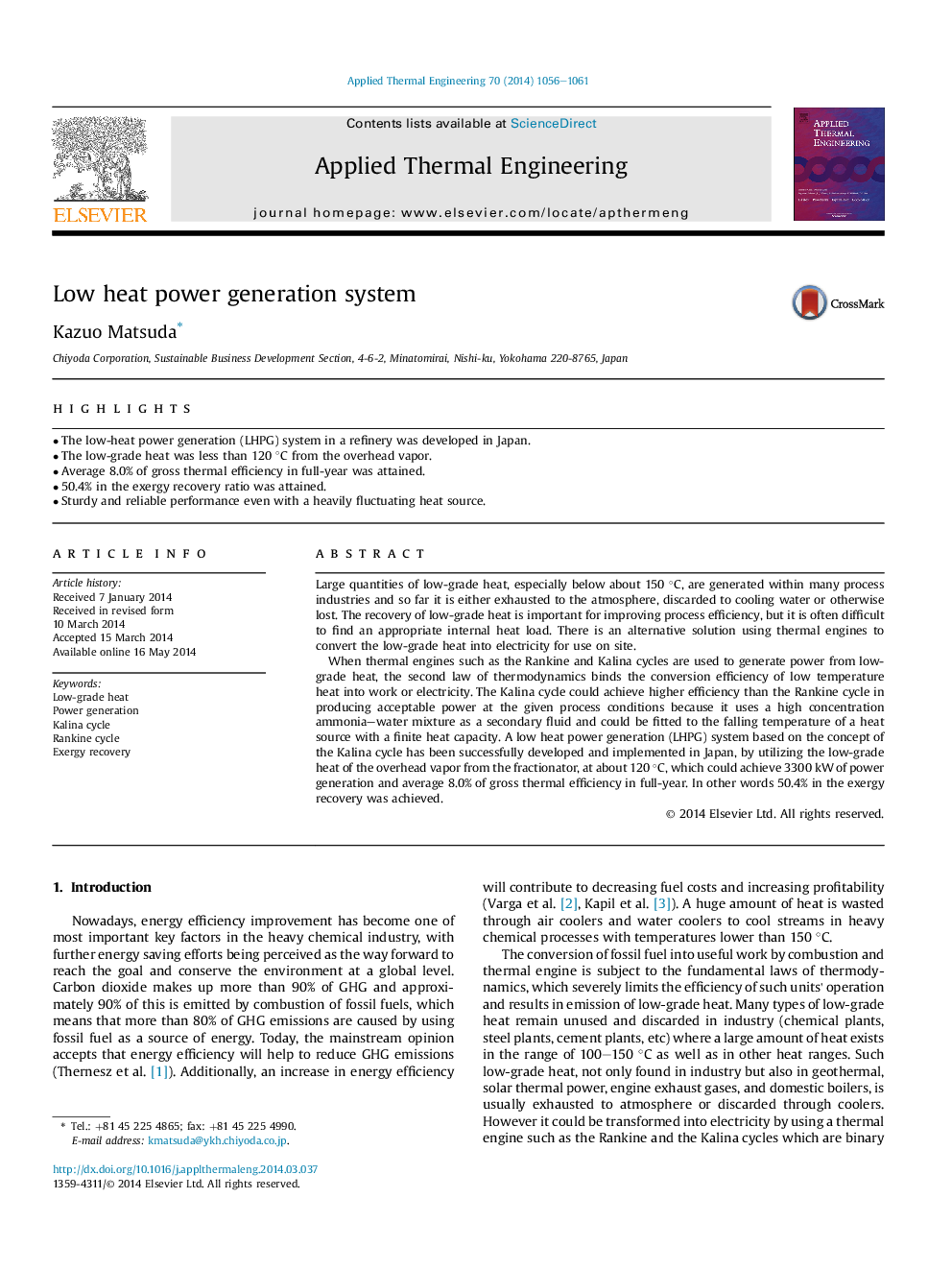| کد مقاله | کد نشریه | سال انتشار | مقاله انگلیسی | نسخه تمام متن |
|---|---|---|---|---|
| 646144 | 1457155 | 2014 | 6 صفحه PDF | دانلود رایگان |
• The low-heat power generation (LHPG) system in a refinery was developed in Japan.
• The low-grade heat was less than 120 °C from the overhead vapor.
• Average 8.0% of gross thermal efficiency in full-year was attained.
• 50.4% in the exergy recovery ratio was attained.
• Sturdy and reliable performance even with a heavily fluctuating heat source.
Large quantities of low-grade heat, especially below about 150 °C, are generated within many process industries and so far it is either exhausted to the atmosphere, discarded to cooling water or otherwise lost. The recovery of low-grade heat is important for improving process efficiency, but it is often difficult to find an appropriate internal heat load. There is an alternative solution using thermal engines to convert the low-grade heat into electricity for use on site.When thermal engines such as the Rankine and Kalina cycles are used to generate power from low-grade heat, the second law of thermodynamics binds the conversion efficiency of low temperature heat into work or electricity. The Kalina cycle could achieve higher efficiency than the Rankine cycle in producing acceptable power at the given process conditions because it uses a high concentration ammonia–water mixture as a secondary fluid and could be fitted to the falling temperature of a heat source with a finite heat capacity. A low heat power generation (LHPG) system based on the concept of the Kalina cycle has been successfully developed and implemented in Japan, by utilizing the low-grade heat of the overhead vapor from the fractionator, at about 120 °C, which could achieve 3300 kW of power generation and average 8.0% of gross thermal efficiency in full-year. In other words 50.4% in the exergy recovery was achieved.
Journal: Applied Thermal Engineering - Volume 70, Issue 2, 22 September 2014, Pages 1056–1061
